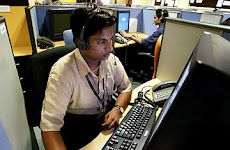By Dinesh C Sharma, Mail Today, April 13, 2013
The dramatic
exit of American multinationals – IBM and Coca Cola – from India in 1977 is
often attributed to tough stand taken by the government over the issue of cap
on foreign equity.
Cables of
the Kissinger era leaked by Wikileaks, however, show that the pull out was not
a knee-jerk decision and, in fact, secret talks were held between the two
companies and government representatives during the emergency period. The final
decision by American companies to exit came during the Janata government in
which George Fernandes was the industry minister.
 Communication
exchanged between the American embassy in Delhi and Washington in April 1976
reveals that top brass of IBM lead by Ralph Pfeiffer - Chairman of IBM World
Trade Americas/Far East Corporation - was keen to remain in India but at its
own terms.
Communication
exchanged between the American embassy in Delhi and Washington in April 1976
reveals that top brass of IBM lead by Ralph Pfeiffer - Chairman of IBM World
Trade Americas/Far East Corporation - was keen to remain in India but at its
own terms.
The company
offered several sweeteners such as a Computer Sciences Centre in India and a
USD 6 million grant to the government for computer-related research in exchange
of concessions on the equity issue. IBM was willing to divest to the 40 percent
level – as required under the Foreign Exchange Regulation Act (FERA) – in
non-core areas such as manufacturing unit for exports.
State
department officials got an impression that “India wanted IBM to remain in
India, but on Government of India terms” and that the position of IBM as a
major transnational operating in the country “was likely to prejudice IBM
efforts to obtain a reasonable concession”.
The strategy
drawn for Pfeiffer’s visit to Delhi was “to try to talk reasonably with M G K
Menon (who was negotiating with IBM on behalf of the government) and others
without acrimony or ultimatums. If this ploy fails he return within a month to
try to see Mrs Gandhi or Finance Minister Subramanian in last attempt to
negotiate agreement whereby IBM can remain in India on acceptable terms”. If
all this failed, IBM was ready to pull out, as it did a year later.
Another
cable sent from New Delhi in December 1976 mentions about problems Coca Cola
was facing with the FERA. However, the cable said, “because it (Coca Cola) has
connections at a high political level it was able to obtain relief.” The
Ministry of Industry was told that it should not deny the company import
licenses while its FERA case remained to be negotiated.
Besides IBM
and Coca Cola, several other companies such as Goodyear and Firestone too were
in trouble. The thrust of American lobbying was on “flexible interpretation” of
FERA guidelines. The embassy officials also wanted that representatives of
foreign firms should be allowed to actually appear in person before FERA
Committee to state defend their position.
 A talk by author of The Long Revolution at the Nehru Memorial Museum and Libraray
A talk by author of The Long Revolution at the Nehru Memorial Museum and Libraray




.jpg)
